Procedural Writing Teaching Resources
Explore procedural writing worksheets, templates, prompts and more to teach your students how to write a procedure text.
This collection of resources is aligned with the Australian English Curriculum, and each teacher-created resource has undergone a careful review process by a member of our English teacher team. That means it's ready for your lesson plans and your students!
Is this your first year teaching this part of the informative writing curriculum? Or maybe you just need some fresh ideas? Read on for a primer from our teacher team!
What Is Procedural Writing?
Sometimes called procedure writing or "how to" writing, procedural writing is the process of writing step-by-step instructions or directions that tell the reader how to complete a task such as playing a game or cooking a meal.
Why Do We Teach Procedure Writing?
There is a lot to cover in the writing curriculum, so why should you take the time to plan lessons around procedures?
Simply put, learning to write directions helps kids learn to think logically and may even help them learn to follow directions more closely!
The procedural writing for kids that we teach in primary school also paves the way for more technical writing skills as students advance and become more experienced writers. Maybe one day one of your students will write the standard operating procedure manual for a device you pick up at the store!
Tips for Teaching Kids How to Write Procedures
Looking for some tips to form your lesson plans? Our collection is full of ready-made ideas, but we didn't stop there!
Here are some ideas from our teacher team!
- Expose your students to procedural writing in a variety of formats. From numbered lists that walk a reader through a process step by step to some of your favourite picture books that use a more narrative format, there are plenty of formats that this text type can take.
- Empower students to think of themselves as experts. Procedural writing can be a lot of fun for kids when we allow them to choose a topic that they know a lot about and become the 'teacher' as they write the procedure of how to complete a task they know well.
- Brush up on verb tenses. Procedural writing is typically written in the present tense, directing the reader to do something right now. It may be helpful to revisit what present tense verbs look like!
- Scaffold writing with a graphic organiser. This may be obvious, but mapping out what happens first, next, etc. before sitting down to write the entire text ensures students can organise their thoughts and don't miss any of the important steps in their procedures!
Procedural Writing Examples for Kids
So, what sorts of texts fall under the procedural writing umbrella? There are countless examples that your students will likely have seen out in the real world and right in your classroom, including:
- Recipe instructions
- Driving directions
- Classroom procedures
- Video game menus
- Laundry instructions on clothing
- Board game instructions
- Some classroom anchor charts

Students have plenty of topics that they know well and may draw upon to write their own procedure texts — like how to wash your dog!
Need more ideas to share with the class? You can also explore the variety of procedural text examples throughout our resource collection, with resources created to help students write guides on any of the following topics:
- How to carve a pumpkin
- How to make a sundae
- How to decorate a Christmas tree
- And more!
- Plus Plan

How to Make a Salad – Procedural Writing Craftivity
Use this engaging craft activity on making a salad to teach your students all they need to know about procedural writing!
- Plus Plan
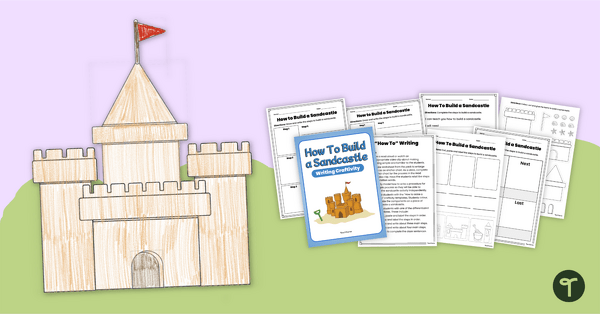
How to Build a Sandcastle – Procedural Writing Craftivity
Use this engaging, hands-on sandcastle craft activity to teach your students all they need to know about procedural writing!
- Plus Plan
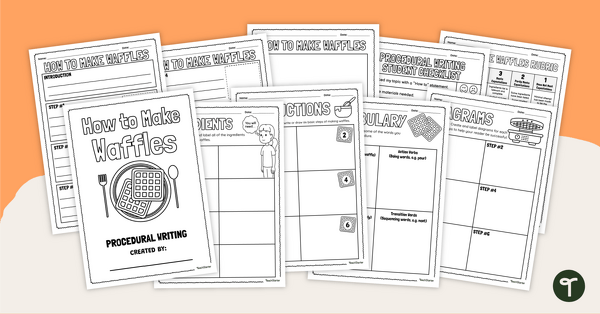
How to Make Waffles – Procedural Writing Project
Get your students writing high-quality procedure texts with this fun “How to Make Waffles” procedural writing project.
- Plus Plan
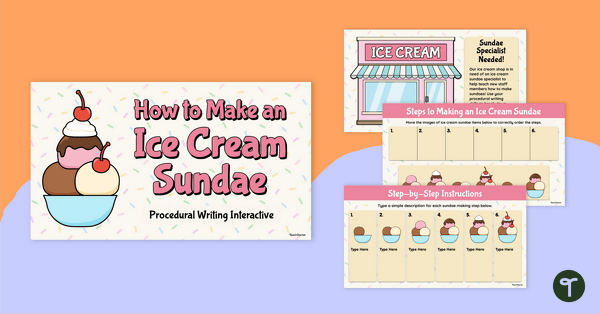
How to Make an Ice Cream Sundae Interactive Activity
Use this “How to Make an Ice Cream Sundae” procedural writing interactive activity to model the purpose, structural elements and language features of procedure texts.
- Plus Plan
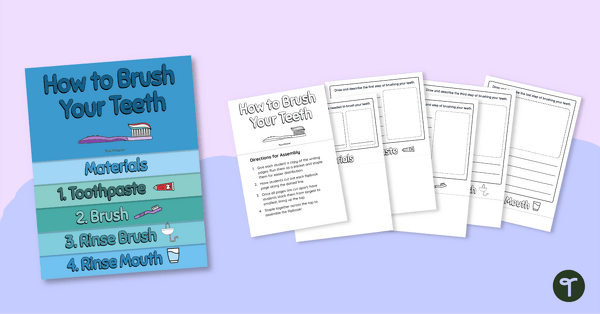
How to Brush Your Teeth Flipbook
Use this “How to Brush Your Teeth” procedural writing activity to help familiarise your students with the structural elements of procedure texts.
- Plus Plan
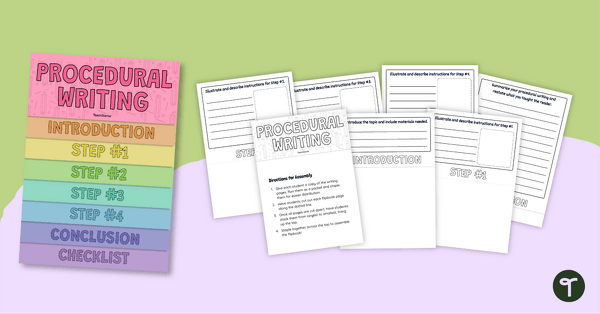
Procedural Writing Flipbook
Get your students to write a procedure text using this easy-to-compile flipbook scaffold.
- Plus Plan
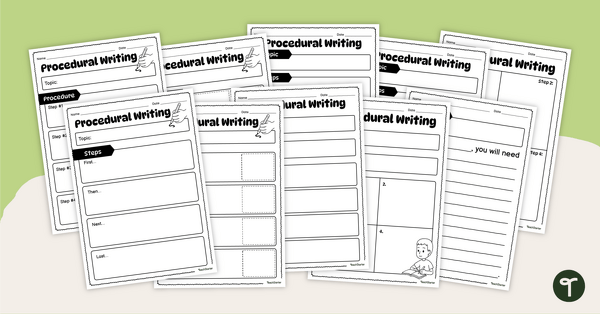
Procedural Writing Graphic Organisers
Get your students to write procedural texts with this set of 10 differentiated graphic organisers.
- Plus Plan

Interactive Build A Snowman Sequencing Activity
Practise sequencing and writing procedural texts with an interactive How to Build a Snowman game.
- Plus Plan
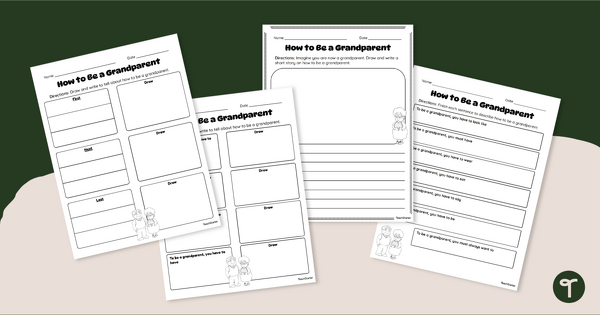
How to Be a Grandparent - Grandparents' Day Writing Prompts
Draw and write to create a fun “How to Be a Grandparent” handbook to share with loved ones on Grandparents’ Day.
- Plus Plan
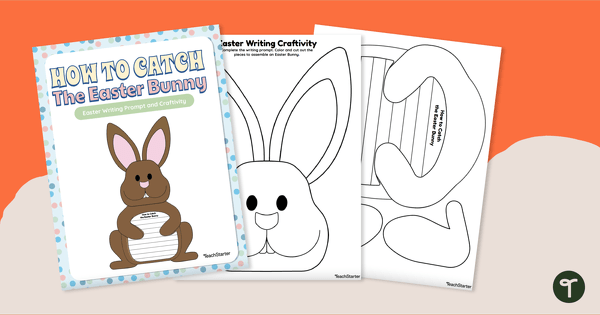
Easter Bunny Craft & Writing Activity
Make writing exciting this holiday season with this one-of-a-kind Easter Bunny classroom resource!
- Plus Plan
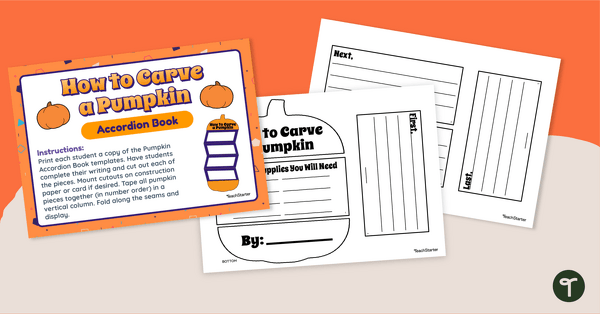
How to Carve a Pumpkin - Accordion Book
Get crafty and inspire potential pumpkin carvers to write with a “How to Carve a Pumpkin” accordion book.
- Plus Plan
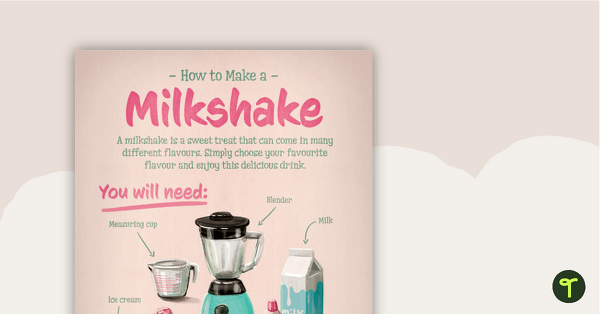
How to Make a Milkshake – Procedural Writing Worksheet
Explore how to make a milkshake while your students fine-tune their procedural writing skills.
- Plus Plan
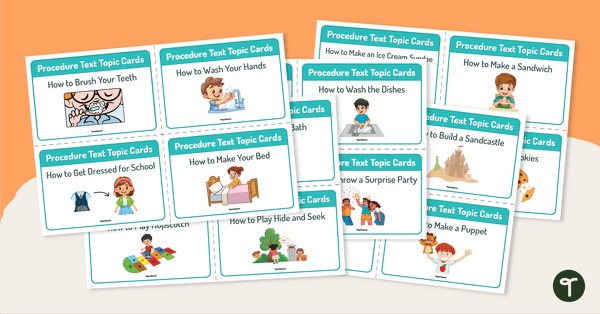
Procedure Text Topic Cards
Use these ideas for procedure writing with your students to help them hone their procedural writing skills.
- Free Plan
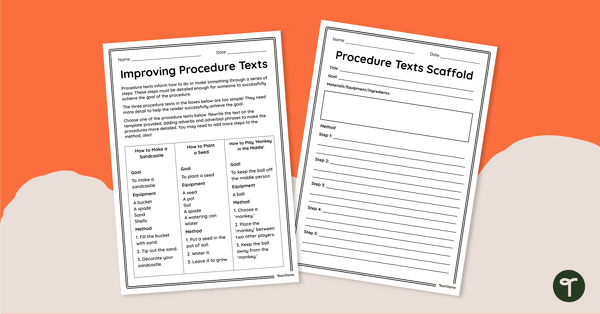
Bumping-Up Procedure Texts Worksheet
Download these procedural writing worksheets to get your students bumping-up some simple procedure texts.
- Plus Plan
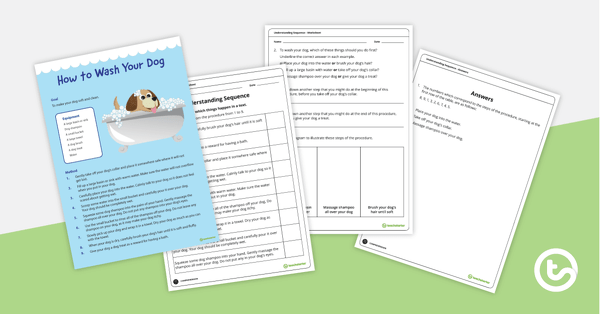
Procedural Writing Sequencing Worksheet – How to Wash Your Dog
Use this procedural writing worksheet to teach your students about the importance of sequence in procedure texts.
- Plus Plan
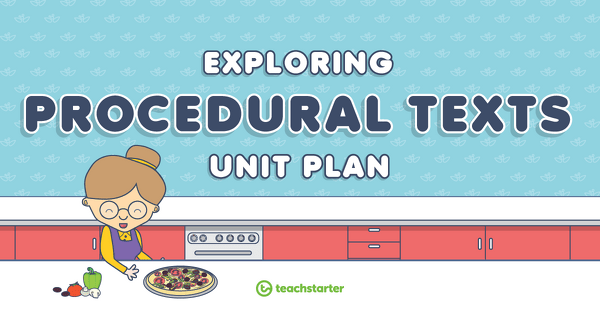
Exploring Procedural Texts Unit Plan
This English unit has been designed to introduce procedural texts to younger students. It addresses the purpose, structure and language features of instructions and recipes.
- Plus Plan
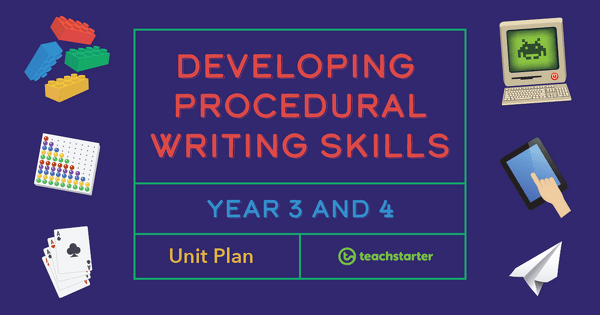
Developing Procedural Writing Skills Unit Plan - Year 3 and Year 4
This English unit addresses the purpose, structure and language features of the procedure text type.